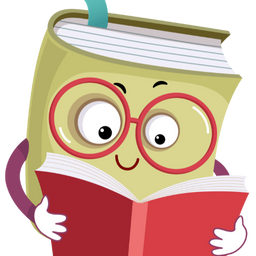I Learned 20 Programming Languages In 25 Years: Here’s What To Expect!
In this article, I will share 5 key takeaways from my experience of learning 20 programming languages over the course of 25 years.

In my journey as a programmer, I have had the opportunity to learn and work with various programming languages. From my first steps in programming to exploring different paradigms and mastering popular languages, and even embracing new and emerging ones, the experience has been both challenging and rewarding. Along the way, I have gained valuable insights and key takeaways that have shaped my understanding of programming languages. In this article, I will share 5 key takeaways from my experience of learning 20 programming languages over the course of 25 years.
Key Takeaways
- Choose the right language based on your goals and requirements.
- Utilize a variety of learning resources to enhance your understanding.
- The initial steps of learning a new language can be challenging but persevere.
- Understanding different programming paradigms can broaden your problem-solving skills.
- Mastering popular languages can open up a wide range of career opportunities.
The Journey Begins: Learning My First Programming Language
Choosing the Right Language
When it comes to choosing the right programming language, there are several factors to consider. It's important to assess your goals and objectives, as different languages have different strengths and weaknesses. Additionally, consider the job market and demand for certain languages. Popular languages like C++, Java, and Python offer a wide range of resources and support, making them great choices for beginners. However, it's also worth exploring newer languages like JavaScript, Go, and Rust, which are gaining popularity and offer unique features. To help you make an informed decision, here is a comparison table highlighting the key features and use cases of these languages:
| Language | Paradigm | Use Cases |
|---|---|---|
| C++ | Procedural | Game Development, Systems Programming |
| Java | Object-Oriented | Enterprise Software Development |
| Python | Functional | Data Analysis, Web Development |
Remember, the best language for you will depend on your specific needs and interests. Take the time to research and experiment with different languages to find the one that suits you best.
Learning Resources
When it comes to learning programming languages, having the right resources is crucial. Books, online tutorials, and video courses are some of the popular options available. It's important to choose resources that are up-to-date and comprehensive to ensure a solid foundation. Additionally, joining online communities and forums can provide valuable support and opportunities for collaboration. Remember, learning programming is a continuous journey, so stay curious and keep exploring!
First Steps and Challenges
After choosing the right programming language and gathering the necessary learning resources, the first steps of learning a new programming language can be both exciting and challenging. It is important to start with the basics, such as understanding the syntax and basic concepts of the language. Practice is key to mastering a programming language, so working on small projects and exercises can help solidify the knowledge. Additionally, seeking help from online communities and forums can provide valuable insights and solutions when facing challenges. It is normal to encounter difficulties along the way, but with perseverance and dedication, overcoming these challenges can lead to a deeper understanding and proficiency in the language.
Below is a table summarizing the first steps and challenges of learning a programming language:
| Steps | Challenges |
|---|---|
| Choose the right language | Overwhelming options |
| Gather learning resources | Information overload |
| Understand syntax and concepts | Language-specific terminology |
| Practice through small projects and exercises | Debugging and troubleshooting |
| Seek help from online communities and forums | Lack of guidance |
Learning a programming language is like embarking on a journey. It requires patience, persistence, and a willingness to embrace challenges. As Albert Einstein once said, "It's not that I'm so smart, it's just that I stay with problems longer."
Expanding My Horizons: Exploring Different Programming Paradigms
Procedural Programming
Procedural programming is a linear programming paradigm that focuses on executing a sequence of instructions. It uses procedures or functions to organize code into reusable blocks. One of the main advantages of procedural programming is its simplicity and ease of understanding. However, it can become difficult to manage and maintain as the codebase grows larger. In this paradigm, data and procedures are kept separate, which can help improve code modularity and reusability.
Here is an example of a simple procedural program in C:
Explain#include <stdio.h>
int main() {
int number = 10;
printf("The number is %d", number);
return 0;
}
In the above program, the sequence of instructions is executed in a top-down manner, with the main() function being the entry point. Overall, procedural programming provides a solid foundation for understanding other programming paradigms and is still widely used in many applications and languages.
Object-Oriented Programming
In my journey of learning programming languages, one of the most significant milestones was diving into object-oriented programming. This paradigm introduced me to the concept of classes and objects, allowing me to organize code in a more modular and reusable way. Understanding the principles of inheritance and polymorphism opened up a whole new world of possibilities. Design patterns became my go-to toolkit for solving common programming problems. I remember reading the famous quote by Alan Kay: 'OOP to me means only messaging, local retention, and protection and hiding of state-process, and extreme late-binding of all things.' This quote resonated with me and emphasized the power of object-oriented programming in creating robust and scalable applications.
Mastering the Tools: Becoming Proficient in Popular Languages
C++
C++ is a powerful and versatile programming language that I spent a significant amount of time mastering. It is widely used in industries such as gaming, finance, and embedded systems. With its extensive libraries and support for low-level programming, C++ allows developers to create efficient and high-performance applications. Learning C++ was a challenging but rewarding experience, as it helped me understand concepts like memory management, pointers, and object-oriented programming.
Here is a table comparing C++ with other popular programming languages:
| Language | Paradigm | Popularity |
|---|---|---|
| C++ | Object-Oriented, Procedural | High |
| Java | Object-Oriented | High |
| Python | Object-Oriented, Functional | High |
Some key features of C++ include:
- Efficiency: C++ allows for low-level memory manipulation and direct hardware access, resulting in highly efficient code.
- Flexibility: C++ supports multiple programming paradigms, giving developers the freedom to choose the approach that best suits their needs.
C++ is often referred to as the 'mother of all languages' due to its influence on the development of other programming languages and its widespread use in various industries.
Java
Java is a popular programming language that is widely used in the industry. It is known for its write once, run anywhere philosophy, which means that Java programs can run on any device that has a Java Virtual Machine (JVM). Java is an object-oriented language that supports features like inheritance and polymorphism. It also has a strong ecosystem with a vast collection of libraries and frameworks available. Java is commonly used for building enterprise-level applications and is often the language of choice for large-scale projects. Learning Java can open up many career opportunities in software development.
| Pros | Cons |
|---|---|
| Platform independence | Verbosity |
| Robustness | Slower execution speed |
| Large community support | Memory consumption |
Java is a powerful and versatile language that continues to evolve with new features and updates. It is a language worth learning for any aspiring programmer.
Python
Python is a versatile and powerful programming language that I learned early on in my programming journey. It has a clean and readable syntax, making it easy to understand and write code. I found Python to be particularly useful for tasks such as data analysis, web development, and automation. One of the things I love about Python is its extensive library ecosystem, which provides a wide range of tools and functionalities for various purposes. Learning Python opened up a whole new world of possibilities for me.
Here is a table summarizing some of the key features of Python:
| Feature | Description |
|---|---|
| Easy to learn and use | Python has a simple and intuitive syntax, making it beginner-friendly. |
| Versatile | Python can be used for a wide range of applications, from web development to scientific computing. |
Python is often referred to as the Swiss Army Knife of programming languages due to its versatility and extensive library support.
Embracing the Future: Learning New and Emerging Languages
JavaScript
After mastering the popular languages, I decided to embrace the future and learn new and emerging languages. JavaScript was one of the languages that caught my attention. With its versatility and widespread use in web development, I knew it was a language I couldn't ignore. Learning JavaScript opened up a whole new world of possibilities for me. From creating interactive web pages to developing server-side applications using Node.js, JavaScript proved to be a powerful tool. It's no wonder that it has become one of the most popular programming languages in the world.
Here's a table comparing JavaScript to some other popular languages:
| Language | Paradigm | Popularity |
|---|---|---|
| JavaScript | Multi-paradigm | Very Popular |
| Python | Multi-paradigm | Popular |
| Java | Object-oriented | Popular |
Some of the key features of JavaScript include:
- Dynamic typing
- Prototype-based object-oriented programming
- First-class functions
As Douglas Crockford said, > JavaScript is the world's most misunderstood programming language. But once you truly understand its quirks and power, you'll see why it's such a valuable language to know.
Go
Go is a modern programming language that was developed at Google. It is known for its simplicity, efficiency, and strong support for concurrent programming. With its static typing and garbage collection, Go allows developers to write safe and efficient code. The language has gained popularity in recent years, especially for building web applications and microservices. Go's built-in concurrency features, such as goroutines and channels, make it easy to write scalable and highly performant applications. Go's simplicity and focus on performance make it a great choice for projects that require speed and efficiency.
Here is a table comparing Go with some other popular programming languages:
| Language | Performance | Concurrency | Simplicity |
|---|---|---|---|
| Go | High | Built-in | High |
| Python | Medium | Libraries | Medium |
| Java | High | Libraries | Medium |
Some of the key features of Go include:
- Static typing: Go enforces type safety at compile time, which helps catch errors early on.
- Garbage collection: Go automatically manages memory allocation and deallocation, making memory management easier for developers.
- Concurrency: Go provides built-in support for concurrent programming, making it easy to write highly concurrent applications.
Go is a powerful and efficient programming language that combines simplicity with performance. It is a great choice for building scalable and high-performance applications.
Rust
Rust is a modern systems programming language that emphasizes safety, concurrency, and performance. It is designed to be memory-safe and thread-safe, making it a great choice for developing high-performance and reliable software. With its strict compile-time checks and powerful ownership model, Rust helps developers catch bugs at compile time and eliminate common programming errors. Its syntax is similar to C++, but with added features like pattern matching and algebraic data types. Rust's borrow checker is a unique feature that ensures memory safety without the need for garbage collection. This makes Rust a popular choice for systems programming, web development, and embedded systems. If you're looking to build fast and reliable software, Rust is definitely a language worth learning.
Here is an example of a table:
| Language | Paradigm |
|---|---|
| C++ | Object-Oriented, Procedural |
| Java | Object-Oriented |
| Python | Object-Oriented, Procedural, Functional |
And here is a list of some key features of Rust:
- Memory safety
- Concurrency
- Performance
- Strict compile-time checks
- Powerful ownership model
Rust is a language that empowers developers to write safe and efficient code, making it a valuable tool in the world of programming.
Frequently Asked Questions
How long does it take to learn a programming language?
The time it takes to learn a programming language can vary depending on factors such as your prior experience, the complexity of the language, and the amount of time you dedicate to learning. Generally, it takes several months to become proficient in a programming language, but mastery can take years of practice and experience.
Which programming language should I learn first?
The choice of the first programming language depends on your goals and interests. Some popular options for beginners include Python, JavaScript, and Ruby. These languages have a relatively gentle learning curve and are widely used in various domains.
What are the benefits of learning multiple programming languages?
Learning multiple programming languages can broaden your understanding of different programming paradigms, improve your problem-solving skills, and make you more versatile as a developer. It can also make it easier to learn new languages in the future.
How do I stay motivated while learning programming languages?
Staying motivated while learning programming languages can be challenging. Here are some tips: set clear goals, break down complex concepts into smaller tasks, find a supportive community, work on projects that interest you, and celebrate your achievements along the way.
Are programming languages constantly evolving?
Yes, programming languages are constantly evolving to adapt to new technologies and programming paradigms. New features and improvements are regularly introduced to make languages more efficient, secure, and developer-friendly.
Can I become a programmer without a computer science degree?
Yes, you can become a programmer without a computer science degree. Many successful programmers are self-taught or have learned through online resources and practical experience. Building a strong portfolio of projects and continuously learning new skills can help you establish a career in programming.
Check out these amazing content from Bookspotz:










